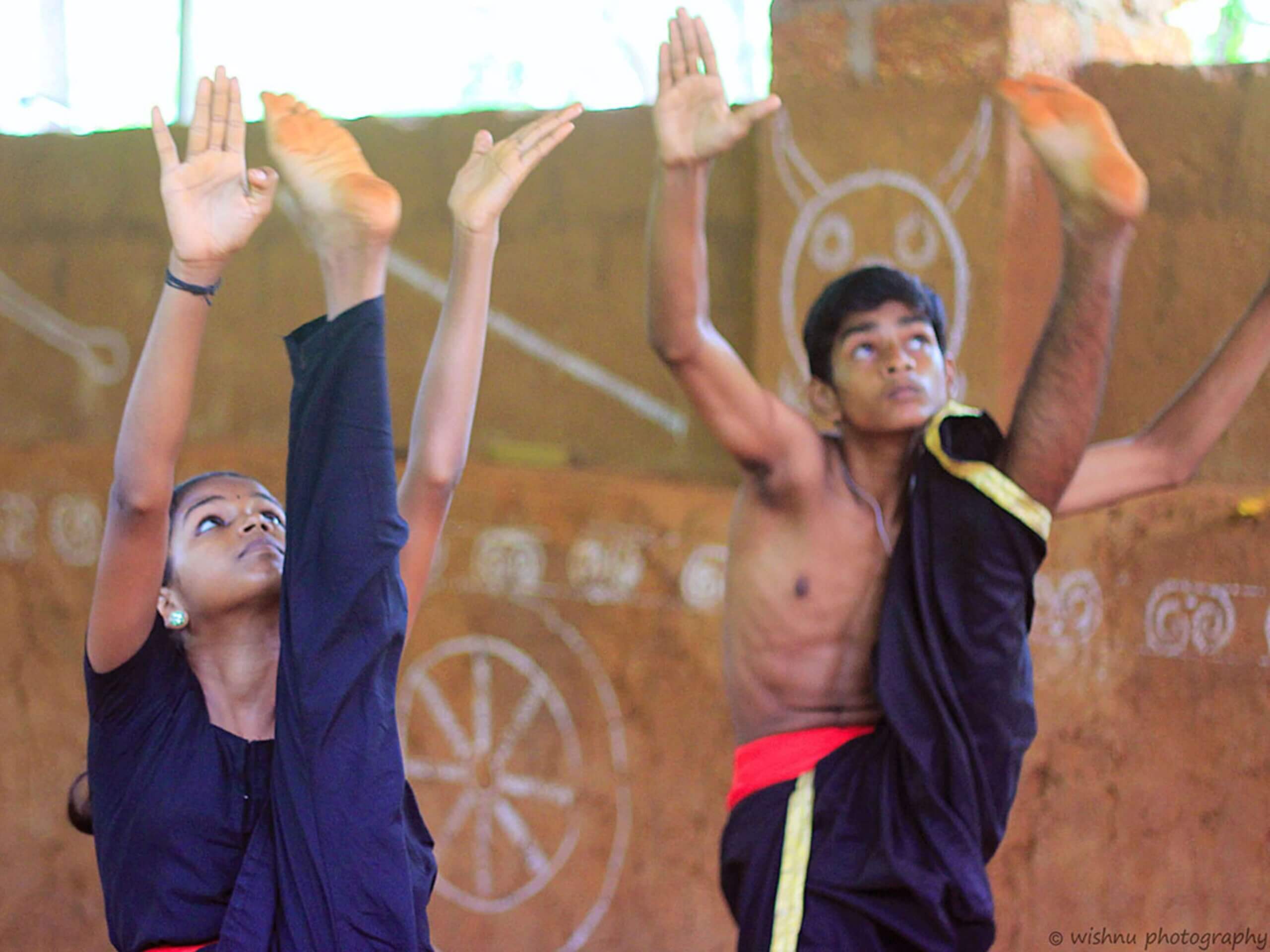Kalaripayattu, the ancient Indian martial art form, is not merely a physical practice but a holistic discipline that encompasses various elements of mind, body and spirit. Among its integral sessions, Kaalukal stands out as a crucial component, especially for beginners seeking stability and balance in their practice.
Understanding Kaalukal
Kaalukal, often referred to as the “leg movements” in Kalaripayattu, is designed to enhance a practitioner’s stability, balance and overall lower body strength. This session is particularly vital for beginners, laying the foundation for more advanced techniques in the future.
Basic Forms of Leg Movements:
Kaalukal introduces practitioners to a variety of leg movements, each serving a specific purpose in honing their skills. Here are some fundamental forms:
1. Nerkal
Nerkal, the foundational leg movement, plays a pivotal role in establishing the core principles of balance and strength. This formal leg technique requires the practitioner to lift the leg fully while maintaining a straight and stretched position at the knee and toe. The precision in executing Nerukal is crucial, as it not only serves as the introductory step in the practitioner’s journey but also lays the groundwork for more intricate movements in the future. This disciplined approach to leg positioning fosters a solid foundation, emphasizing the importance of stability and proper alignment.
2. Veedikal
Veedikal, the outrise leg movement, holds a distinctive place in the martial art’s repertoire. This particular technique involves lifting the leg outward, contributing significantly to the development of the lower abdomen and thigh muscles. The deliberate and controlled execution of Veedikal engages these muscle groups, fostering strength and toning the targeted areas. Simultaneously, the outward movement enhances flexibility, encouraging a broader range of motion in the lower body.
3. Agankal
Agankal is a fundamental leg movement, characterized by the inward lifting of the leg. This technique holds profound significance as it not only refines the physical execution of the art but also impacts the practitioner’s core muscles. The controlled and deliberate inward lifting engages the core, creating a dynamic tension that fortifies the abdominal muscles. Through the consistent practice of Agankal, practitioners not only develop a robust core but also experience a significant improvement in balance.
4. Konkal
Konkal, also known as the cross-leg technique, is an integral component of Kalaripayattu. It involves a diagonal movement of the leg, which requires the practitioner to maintain a stance that alternates between stretching and balancing. This maneuver is not just a test of one’s agility but also significantly enhances flexibility. As practitioners execute the Konkal, they engage multiple muscle groups, with a particular emphasis on the core. The systematic tightening and releasing of these muscles during the movement help in strengthening the core, which is essential for the stability and efficiency.
5. Pagarchakal
Pagarchakal, a complex leg maneuver, is distinguished by its tripartite structure, which challenges the practitioner’s prowess in twisting and balancing. This technique is executed in three distinct parts, each designed to enhance the martial artist’s control over their body movements
6. Tirucchikal
Tirucchikal is a dynamic leg technique, characterized by its twisting motion. In this maneuver, the practitioner’s leg is continuously lifted and rotated, describing a full circle in the air. This continuous lifting and twisting demand a high level of bodily control and balance, as the martial artist must maintain a steady upper body posture while the leg moves through the rotation.
Beyond the Basics
Kaalukal goes beyond these fundamental forms, incorporating advanced leg movements that challenge practitioners to push their physical limits. Jumping legs and twisting legs add an extra layer of complexity, requiring a combination of strength, flexibility and coordination. These movements not only contribute to the practitioner’s physical prowess but also cultivate mental focus and mindfulness.
Conclusion
In the journey of mastering Kalaripayattu, the significance of Kaalukal cannot be overstated. As beginners progress through the diverse leg movements and forms, they not only build a solid foundation for their practice but also unlock the potential for advanced techniques in the future. Kaalukal serves as a gateway to stability, balance and the seamless integration of mind and body.
FAQs
Q: How long does it take to become proficient in Kaalukal?
A: Proficiency depends on the individual, but it typically requires months of dedicated practice.
Q: Are there age or physical fitness requirements for Kaalukal?
A: While there’s no strict age limit, a good level of dedication is important for training.
Q: Can Kaalukal be practiced solo?
A: Yes, almost all forms of Kaalukal can be practiced individually.
Q: How does Kaalukal training benefit practitioners?
A: It helps in enhancing body posture and balance, as it requires a strong, stable stance and coordinated movements. This practice also powerfully engages the legs and core muscles, promoting spinal coordination and overall bodily agility.
Q: How is safety ensured during Kaalukal training?
A: Basic leg exercises of Kaalukal are generally safe and can be practiced independently, as they are designed to gradually build strength and flexibility. However, for advanced-level practices, it is advisable to seek guidance from trained instructors to ensure proper technique and prevent injury.





